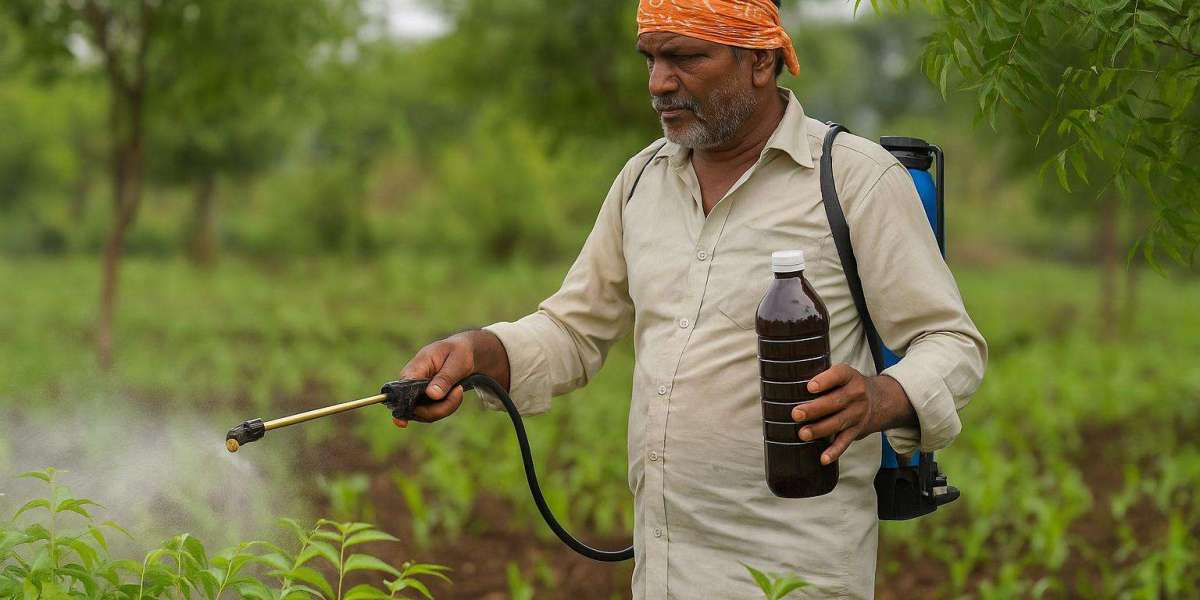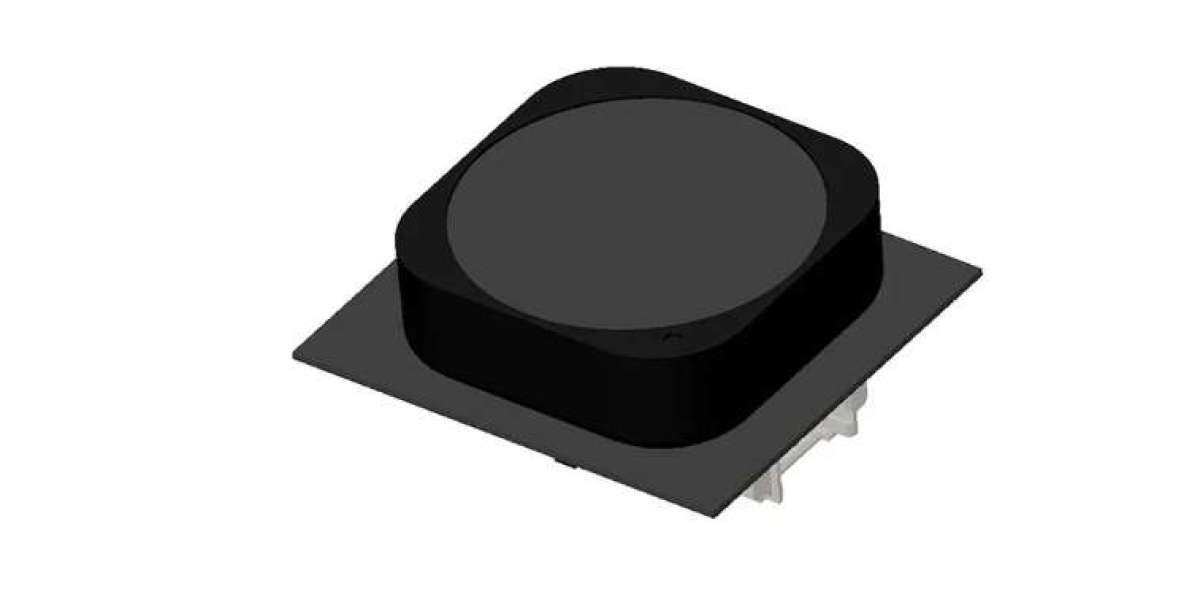Accuracy is crucial when employing formulations of concentrated neem oil. The secret to safe, efficient, and cost-effective pest management is figuring out the right dosage of neem oil (10000 ppm) per litre, whether you are dealing with pests in small home gardens or commercial crops. This article examines its ideal use cases, pricing patterns, and real-world applications and explains how to do it effectively.
What Does Neem Oil 10000 PPM Mean?
10,000 parts per million of azadirachtin, the primary bioactive ingredient isolated from neem seeds, are present in neem oil 10000 ppm. This substance acts as an oviposition deterrent, insect growth regulator, and antifeedant for various pest species.
Smaller amounts per litre of water are needed because higher PPM denotes stronger efficacy. But because of this strength, precise computation is also essential.
A 10000 ppm neem formulation offers these advantages:
Stronger pest suppression at low volume.
Longer residual effect on plant surfaces.
Broader-spectrum action without harming beneficial insects.
Correctly calculating the dosage ensures these benefits without phytotoxicity or residue concerns.
The Standard Neem Oil 10000 PPM Dosage Per Litre
The average dosage range depends on the application's purpose and the pest infestation stage.
Purpose | Dosage per Litre | Application Frequency |
Preventive Spray | 1.5–2 ml | Every 10–15 days |
Curative Treatment | 2.5–3 ml | Every 7–10 days |
Soil Drenching | 3–4 ml | Once at transplanting |
Mix with 1 ml of natural emulsifier per litre to help the oil blend well with water. Always shake the mixture thoroughly before spraying.
For example, if you’re preparing 15 litres of solution for a small farm:
For preventive use: 2 ml x 15 = 30 ml neem oil
Add 15 ml emulsifier
Mix in 15 litres of clean, soft water
Consistency in measurement leads to predictable and safe results.
Factors That Influence the Correct Dosage
Dosage isn’t one-size-fits-all. Several contextual factors shape how much neem oil to use per litre:
Crop Type: Leafy vegetables need lighter doses than fruiting plants.
Climate Conditions: In dry weather, sprays evaporate faster, reducing effectiveness.
Pest Intensity: Higher infestations need higher dosage and shorter intervals.
Plant Stage: Avoid heavy sprays during flowering to protect pollinators.
Farmers working with sensitive crops like lettuce or herbs often reduce dosage to 1.2–1.5 ml per litre, while those treating woody perennials might go up to 3 ml per litre under pest pressure.
Application Tips That Maximize Neem Oil Efficiency
Even with accurate dosage, application techniques influence effectiveness. The farmer in this case used a consistent strategy:
Spray early in the morning or late afternoon to reduce evaporation.
Use soft water to prevent separation or oil beading.
Avoid combining neem oil with synthetic pesticides.
He added Neemol - Greenpeace Neem Oil Extract Azadirachtin 10000 PPM every two weeks in his crop rotation. This single input protected brinjal, okra, and cucumbers from sucking pests like whiteflies and mites across their entire growth cycle.
The higher PPM strength meant less volume per acre, cutting spray input costs by nearly 40% within one season.
How Neem Oil 10000 PPM Price Affects Usage Decisions
Cost is often a concern. At first glance, the neem oil 10000 ppm price 1 litre may seem high, especially compared to generic neem emulsions or lower-grade alternatives.
Neem Grade | Approx Price per Litre | Usage per Litre Water | Reapplication Needed |
3000 ppm | ₹300–₹400 | 5–10 ml | Weekly |
5000 ppm | ₹450–₹600 | 3–5 ml | Every 10 days |
10000 ppm | ₹600–₹850 | 1.5–3 ml | Every 2–3 weeks |
But over time, neem oil 10000 ppm proves to be more cost-effective when cost per application is considered. Longer-lasting bottles, less work, and improved plant recovery result from fewer applications and reduced volume utilisation.
The purity and extraction quality of the neem oil (10000 ppm), which is frequently solvent-extracted or cold-pressed to retain the most azadirachtin, are also reflected in the price.
“Neem oil doesn’t just repel; it changes pests' survival rules. It forces them to leave—or slowly disappear.”
This line from a horticulturist in Maharashtra captures the real strength of neem: its long-term dominance, not instant destruction.
Use Cases That Prove Dosage Accuracy Matters
Here’s how accurate dosage translates into real-world benefits across three different crop types:
Chilli plants in humid regions
Dosage: 2 ml per litre, every 12 days
Result: 60% reduction in thrip attacks; no fruit deformities.Bottle gourd under fruit fly infestation
Dosage: 3 ml per litre + 1 ml emulsifier
Result: 90% fruit fly suppression after second application.Herbal garden with tulsi and mint
Dosage: 1.5 ml per litre, sprayed weekly
Result: Zero leaf discoloration; pollinators remained active.
Precision ensured safety for edible foliage, effective pest management, and thriving plants without toxic buildup.
Where to Find Reliable Neem Oil 10000 PPM?
Trusted brands matter when using concentrated neem products. Look for:
Certified azadirachtin content.
OMRI-listed or organically certified products.
Clean labeling with usage instructions.
Sites like the Biopesticide Industry Alliance and India’s AgriPortal provide valuable resources on certified neem-based biopesticides and usage protocols.
FAQs
What does 10000 ppm mean in neem oil?
It means the oil contains 10,000 parts of azadirachtin per million parts of the solution, indicating high potency.How much neem oil 10000 ppm per litre of water?
Use 1.5–2 ml per litre for regular use, and 2.5–3 ml per litre for active infestations.Can I use neem oil 10000 ppm on flowering plants?
Yes, but avoid direct sprays on blooms to protect pollinators like bees.What’s the difference in neem oil 10000 ppm price and lower grades?
Higher-grade neem costs more per litre but requires smaller quantities, making it more economical long-term.Can neem oil burn plants if overused?
Yes. Overdosing or spraying in harsh sunlight can cause leaf burn, especially on tender foliage.
Seasonal Spray Planning with Accurate Dosage
To make the most of neem oil 10000 ppm, farmers and gardeners plan applications based on the crop lifecycle:
Pre-sowing: Soil drench at 4 ml per litre to prevent nematode buildup.
Vegetative Stage: Spray 2 ml per litre every 15 days.
Pest Onset: Increase dosage to 2.5–3 ml per litre for 2–3 cycles.
These measured interventions keep the pest population in check while supporting natural predators.
Concluding Remarks: Control by Calculation, Not By Chance
It is not enough to simply spray neem oil 10,000 ppm; you also need to calculate your way to better outcomes. A proper dosage guarantees that each drop acts harder, lasts longer, and keeps your crops safe. In the long term, a precise method saves time, money, and yields instead of depending on hunches or general ratios.
Knowing precisely how much to apply can mean the difference between healthy crops and seasonal losses in a market where farming inputs are becoming more expensive and scrutinised.







